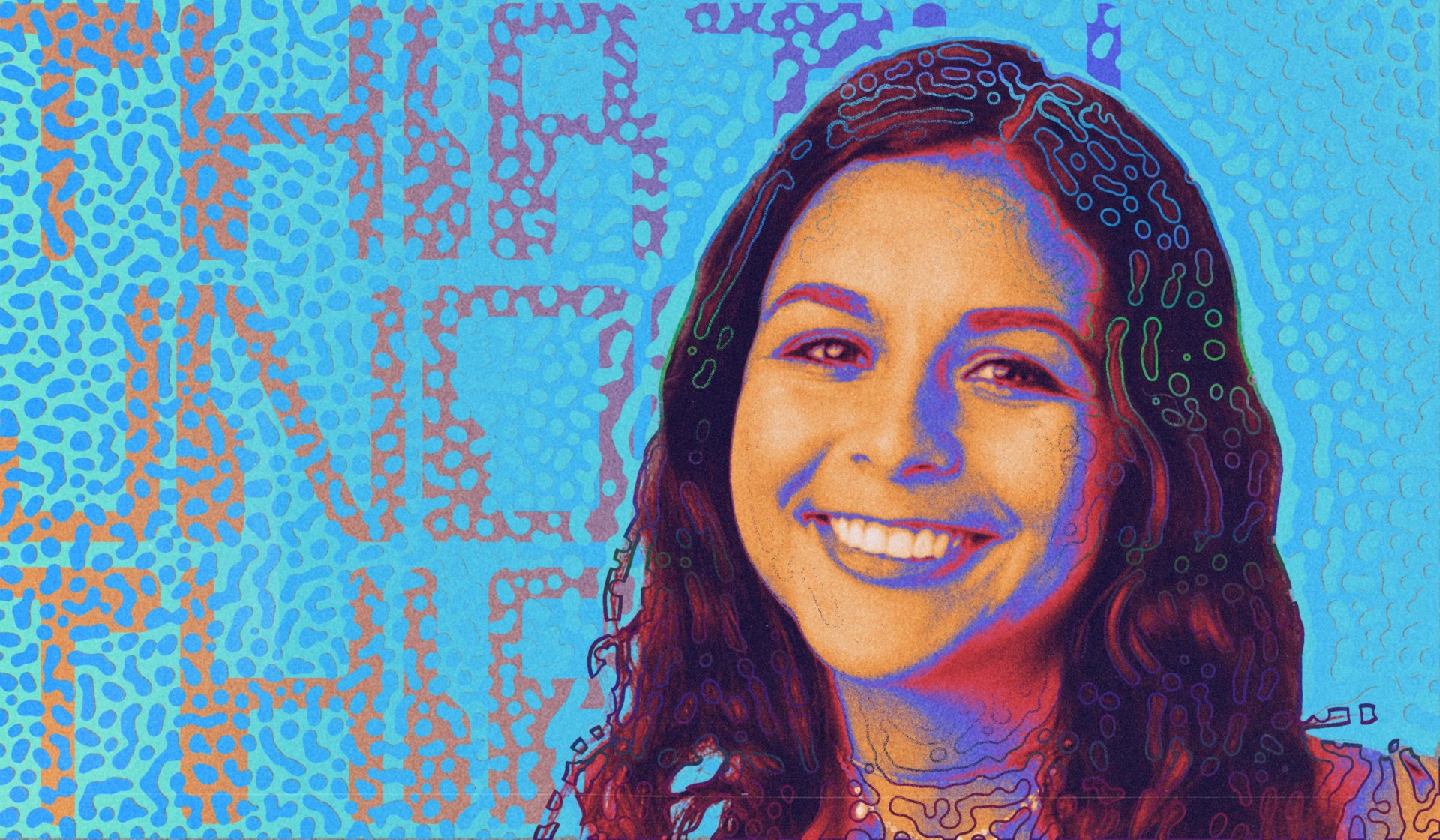The Learning Guild released their Thirty Under 30 in Learning selection for 2020, containing some of the top minds in the industry. These people are changemakers, and to celebrate that we took some time to interview these talented individuals to hear, in their own words, what it takes to be a leader in learning.
We’re kicking off the series with Dalia Abbas, an Instructional Designer working for Springboard in San Francisco, CA. Prior to her role as an ID, Abbas was a teacher for five years before completing a master’s degree at the Harvard Graduate School of Education—where she learned the psychology of learning that set the groundwork for her roles in the industry going forward. From there she moved to develop customer-facing learning content for Zendesk. Currently, she works remotely from Bologna, Italy.
Tell us about your company and your role within it?
I work for Springboard, a San Francisco education tech company, and we exist to bridge the world’s skills gap. We’re on a mission to create curriculums that get our learners job-ready in 6–9 months.
I’m currently working on our new Cyber Security Career Track, which covers cybersecurity fundamentals, systems and network security, vulnerability assessment, and security operations. The Cyber Security Career Track is all about securing data—it’s really hot right now. Currently, there are 3.5 million unfilled cyber roles globally.
Before we launch, we do a ton of research. We interview hiring managers as well as people from all over the tech industry. We ask questions like, “Would you hire an individual with this set of skills?” Some industries aren’t as familiar with bootcamp programs, but we have determined there’s a really good fit here.
In terms of my role as an Instructional Designer, I always tell folks instructional designers can do a whole range of tasks and that it really varies depending on the organization or company. With my current role, I’m the primary liaison between Springboard and the cybersecurity SMEs.
Basically, I work with them to take their years of professional experience and formulate that insight into course goals, which we then turn into learning objectives, making sure there’s always alignment between course objectives and outcomes. I’d say misalignment is a challenge in our industry, and our job as instructional designers is to resolve that.
Tell me about some of the things you’re doing to stay current in the world of learning? Any people or companies you’re watching in the industry?
I’m super active on Twitter. There are a lot of prominent learning people on Twitter. Following their blogs is a great way to keep in touch with what’s current. A few of my favorite folks to follow are Melissa Milloway, Cara North, Cathy Moore, and Julie Dirksen.
Melissa is constantly contributing to the community and I frequently listen to her on learning podcasts. Julie Dirksen also has an amazing Facebook group based on her book Design for How People Learn.
I also listen to podcasts. Instructional Designers in Offices Drinking Coffee (IDIODC) is a great one for learning. Some of my favorite episodes cover questions like, “What’s the difference between instructional design and learning experience design?” or, “How do xAPI and programming language fit into learning design?”
Companies like Salesforce are building educational experiences at scale. It’s a totally different thing to create a learning experience that will impact thousands or even millions. If you create an experience and scale it properly, there isn’t much else you need to do.
What do you find most rewarding about working in the learning industry?
The most rewarding part of my job is hearing from the students and individuals whose lives have been changed for the better. As learning professionals, we get to change lives—the work we do is far from minor! I get to see the impact of my work every day and that’s so important.
What makes a good learning experience? How do you evaluate a good learning experience?
A good learning experience is about two things: flow and the right amount of guidance. A learning experience shouldn’t be too easy or too frustrating.
A few of my favorite theories to draw from are Robert Gagné’s Nine Principles of Instruction and the Zone of Proximal Development.
Specifically, I love to use Gagné’s Nine Principles as a sort of checklist when I develop a learning experience. It’s especially useful because, compared to my previous role as a teacher, I don’t get real-time feedback as I’m creating learning content.
What’s the last thing you Googled about learning?
Gamification in cybersecurity education. This is an area I want to grow my learning and knowledge in with my current project.
I think, given the Zoom fatigue that’s happening these days, this is something that’s becoming more and more important—making learning content more than just sitting in front of your computer. How can these career track courses be gamified without watering down the learning experience? A learning experience doesn’t have to be fun to be effective, but it does need to be engaging.
What KPIs/metrics matter when it comes to good learning? What are the metrics you track or wish you could? How do you know that you’ve met those characteristics/qualities in your own work?
KPIs and metrics depend on the learning you’re creating. I’m working on hireability. How many students do I set up for success? We’re doing something at Springboard that people in traditional academia don’t always do very well: considering what happens after the course for students.
What do you do if the hireability doesn’t match your expectations? We build more. We provide behavioral and technical interviews, we provide them with mentors, we provide them with resumes. We do research to figure out how we need to modify a specific track so our learners are getting what they need from the content.
For example, if you’re a designer, you need a portfolio. You don’t need a portfolio with all of these career tracks. So, our design courses are supplemented with a portfolio requirement. If something isn’t working in a course, we adjust quickly. At Springboard, we have so many touchpoints in terms of metrics to ensure a holistic, intentional experience.
Other KPIs I find important are completion rates and drop-off points. We’ve seen this issue with Massive Open Online Courses (MOOCs), which were super hot, but people would start them and fall off. So how effective was the learning after all?.
Tell me about your favorite learning projects? What were the most successful parts of them? Why?
One cool thing that I did while I was in graduate school was work as an Education Research Consultant for a company called BrainCo and work on their software called FocusEDU. Users wear a headband, and it assesses their focus and engagement levels.
I personally think that looking at my students’ faces is the best way to know if a learning experience is engaging. My job was to onboard the teachers that were going to use FocusEDU. I knew we needed it to be easy, and I knew we needed the headband to not distract the students. It gave me a different perspective on EdTech.
In terms of internal projects, for fun and on the weekends, there’s a project I’m quite excited about. For context, I’m currently working remotely from Italy. I met a basketball player, her name is Alessandra Tava and she’s an author, and she plays basketball with a lot of people from other countries. We’re working on building a learning experience around her book that helps basketball players learn the basics of the Italian language. It’s a work in progress! Stay tuned!
On a scale of 1-10, how important are the visual design and overall aesthetics of learning content (10 is high)? Why?
7—I think there are a lot of mistakes you can make in visual design that make the learning experience less effective. So, I think the intentionality and thoughtfulness have to be there, but it doesn’t have to be a huge thing.
If you think of Khan Academy, the creator of it started off teaching his niece and he asked himself, “How could I use visuals to help the learner? Does this image distract? Does it help the learner?”
I think about Richard Mayer and his principles of multimedia learning. They’re principles to use when designing, and they’re super simple. For example, the signaling principle—make it as easy as possible to have students pay attention to what you want them to pay attention to. There’s also the redundancy principle. You have to ask, “What do you really need to make sure you’re not getting distracted?”
If you have a visual designer working with you, that’s great, but these principles can apply to anyone.
Where do you see the learning industry going in a post-covid world?
I think this opportunity forced people into online learning (great for some, not for others). Everyone now takes remote and online learning seriously. It’s a viable option now. Companies that have already thought about this and have an LMS with content in it are doing well because they were prepared.
I think other companies are starting to develop that way. The learning industry is that much closer together now—anyone can just pull in an expert over Zoom.
For eLearning, learning experience design, and instructional design, our roles have become even more important. It’s not about creating things that people feel forced to go through—it’s about creating things that people want to go through.
What excites you about the future of learning? What’s missing in the learning industry today?
With corporations realizing the potential of their organization through learning, I’m excited for how companies are really starting to take it seriously at every stage.
I hear about “upskilling” and teaching employees while they’re on the job—more just-in-time learning. The half-life of a skillset is around five years, so it’s good to see companies valuing these things. Emphasis on growth and education signals that companies are evolving.
Employees come to their jobs and have potential, but they need specific training to be great at their jobs. Companies are learning that their employees will help them get to where they need to be.
In terms of what’s missing, I wish more organizations could integrate the apprenticeship model. Practical, application-based learning. If educational experiences were more application-based, people would feel like learning experiences actually align with what they need to do next.
What’s one piece of advice you would give to companies when it comes to learning?
Listen to your employees. Always do a needs analysis before you decide what your employees need to learn. I can’t tell you how many times I’m sitting in a room and thinking, “This is unnecessary,” or, “This isn’t what we need—THIS is what we need.”
Thorough needs analysis—talking to employees, looking at learning analytics, thinking through the environment—this helps you zero in on learning that’s actually going to be effective in the long-run.
_____
We hope you found this interview as inspirational as we did! Want to keep in touch with Dalia Abbas? Find her on Twitter or LinkedIn to learn more.
Keep in touch with the latest learning industry trends
Browse our insights to learn about course design, development, and more.
View Learning insights→
